New plans have been revealed for a $2 billion research center run by UC Berkeley at the NASA Ames Center in Mountain View, Santa Clara County. The Berkeley Space Center, as it will be called, will reshape 36 acres on the sprawling Ames Research Center, providing a hub for future companies to collaborate with the school and NASA scientists & engineers to improve technology for aviation, space exploration, and how people live and work in space.
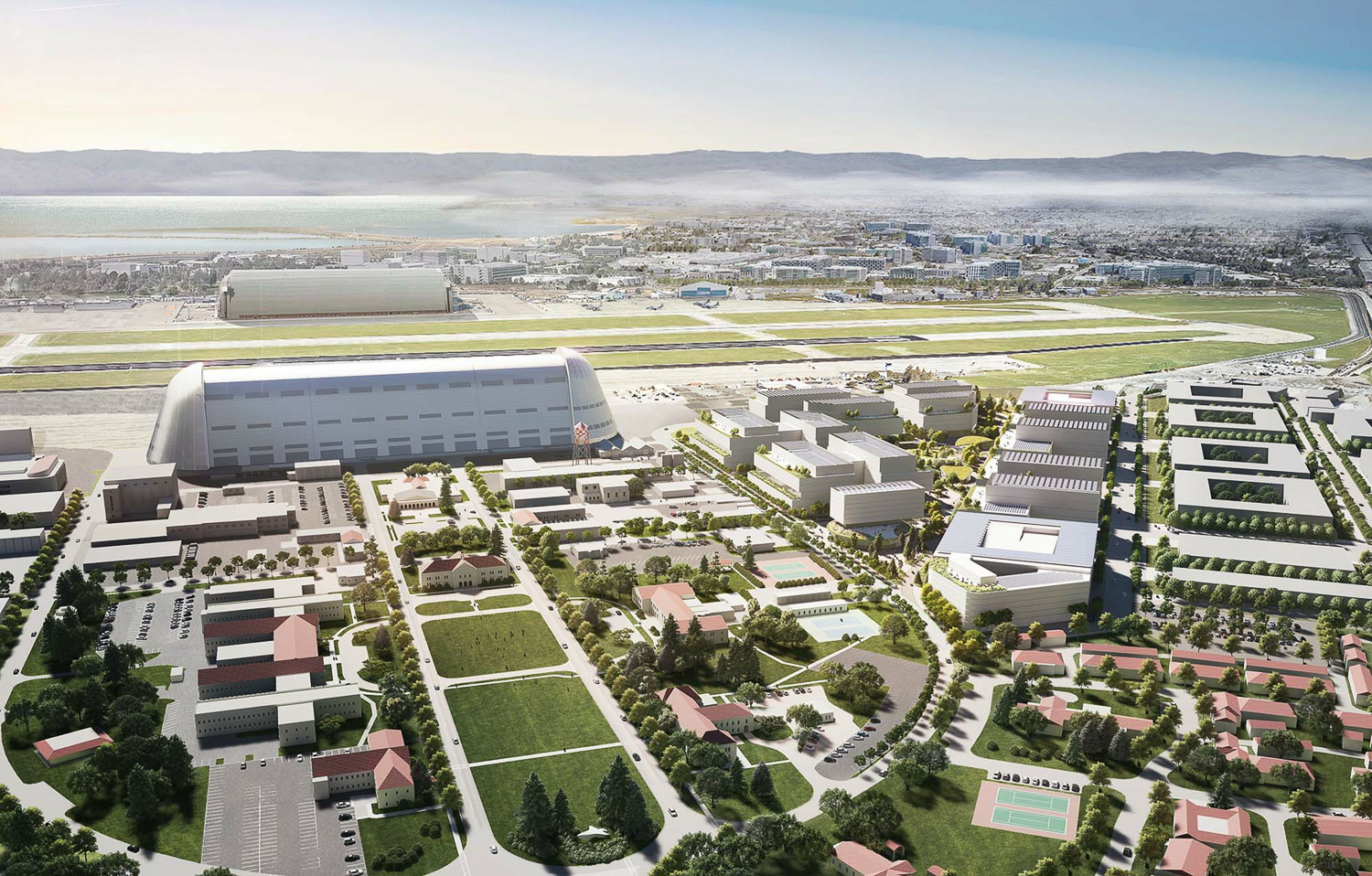
Berkeley Space Center aerial view, rendering by Field Operations and HOK
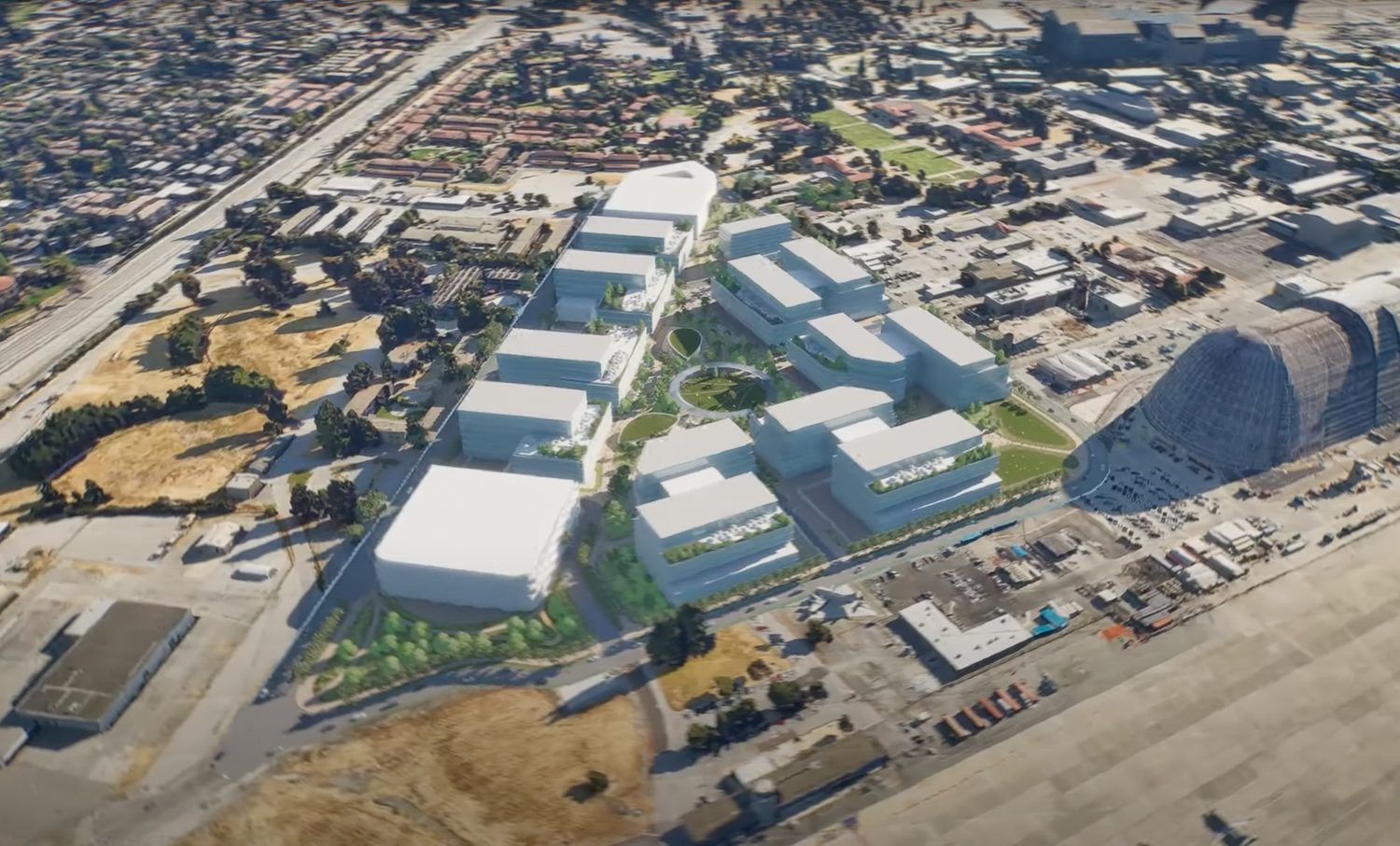
Berkeley Space Center site massing, rendering by Field Operations and HOK
“This expansion of Berkeley’s physical footprint and academic reach represents a fantastic and unprecedented opportunity for our students, faculty, and the public we serve,” said UC Berkeley Chancellor Carol Christ in the announcement. “Enabling our world-class research enterprise to explore potential collaborations with NASA and the private sector will speed the translation of discoveries across a wide range of disciplines into the inventions, technologies, and services that will advance the greater good.”
In a press release from NASA, Ames Center director. Eugene Tu said, “The diverse portfolios of NASA Ames and Berkeley open potential future collaborations in a variety of areas, including interplanetary exploration, air transportation capabilities, the search for life beyond our planet, and environmental studies for the benefit of all.” The development will cover a triangular lot with a view of the landmark Hangar One, which is currently being renovated for Google’s Planetary Ventures unit and expects to finish exterior recoating by next year.
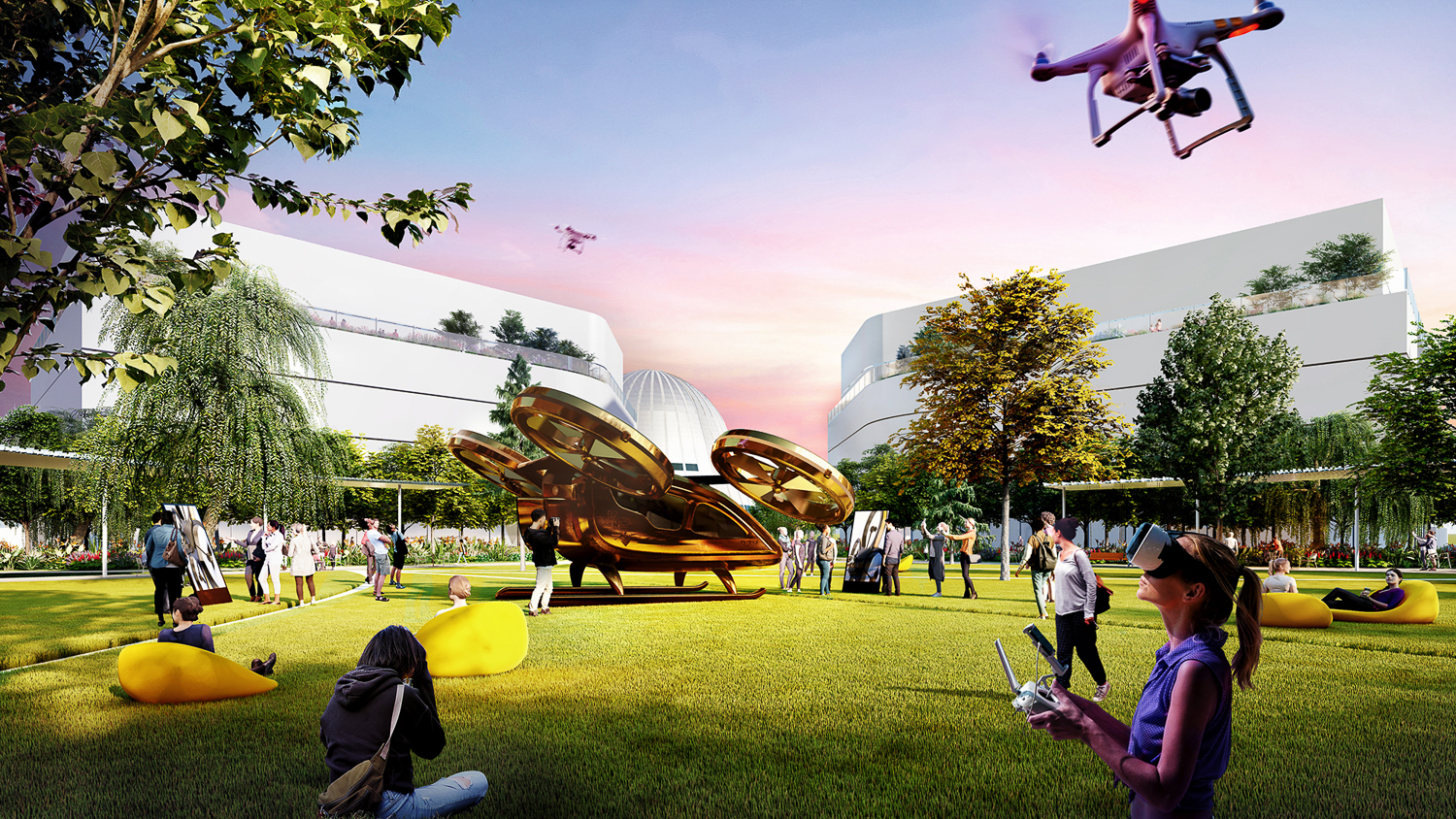
Berkeley Space Center lawn, rendering by Field Operations and HOK
San Francisco-based SKS Partners is the developer. The project is expected to create 1.4 million square feet of gross floor area for research, housing, parking, and some retail across 11 structures. The master plan has been designed by HOK and Field Operations. Future students will have access to classrooms, state-of-the-art research centers, and proximity to several of the Ames’ major facilities. CBRE will be assisting with the project team.
Further elaborating NASA’s vision in the project, Tu explained that “we would like the potential of having proximity to more students at the undergraduate and graduate level. We would also like the possibility of developing potential partnerships with faculty in the future. The NASA mission is twofold: inspiring the next generation of explorers, and dissemination of our technologies and our research for public benefit. Collaboration between NASA and university researchers fits within that mission.” Those facilities include a supercomputer, the world’s largest wind tunnel, and NASA’s only plasma wind tunnel for testing entry systems and thermal protection systems.
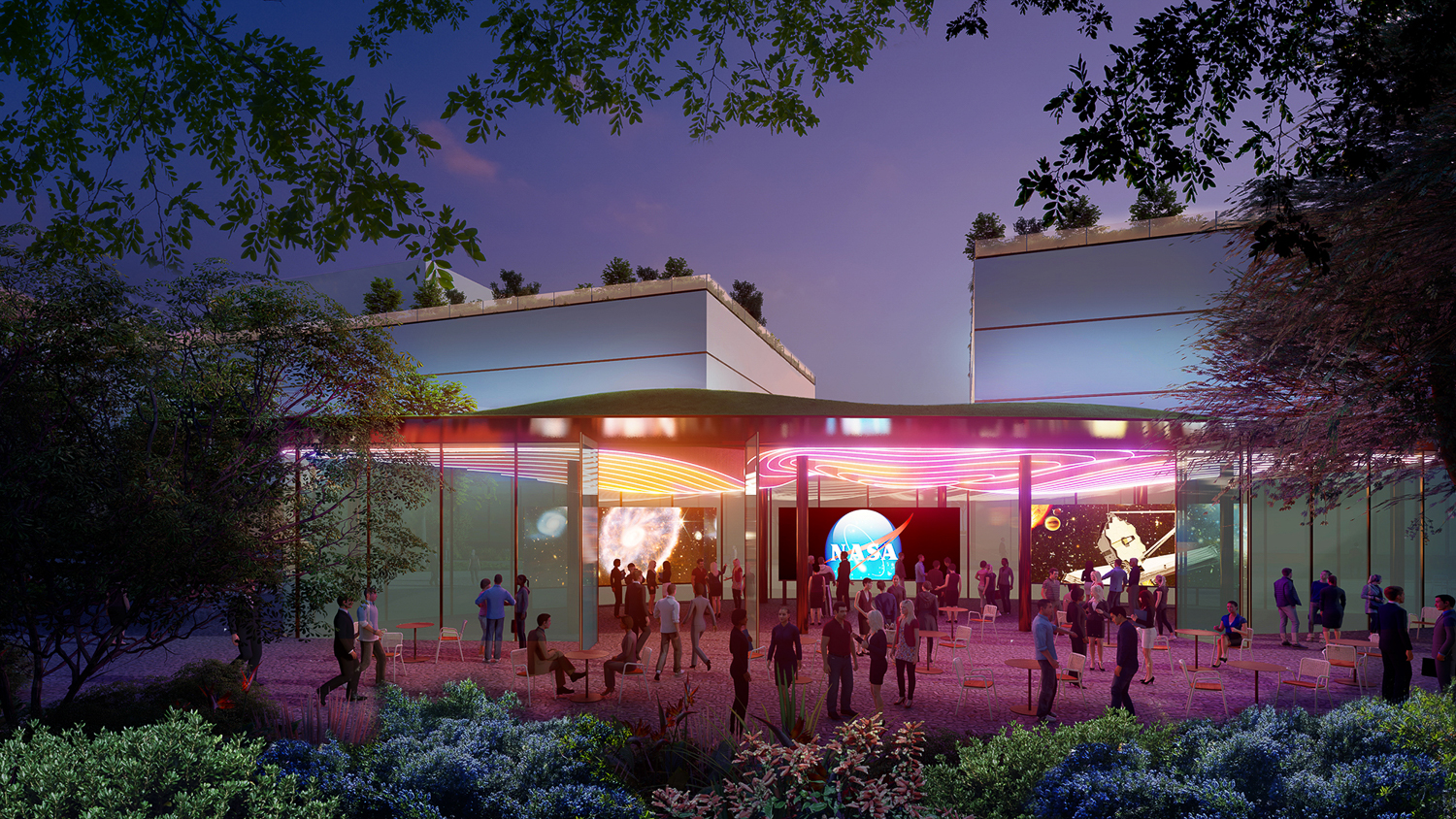
Berkeley Space Center site map, rendering by Field Operations and HOK
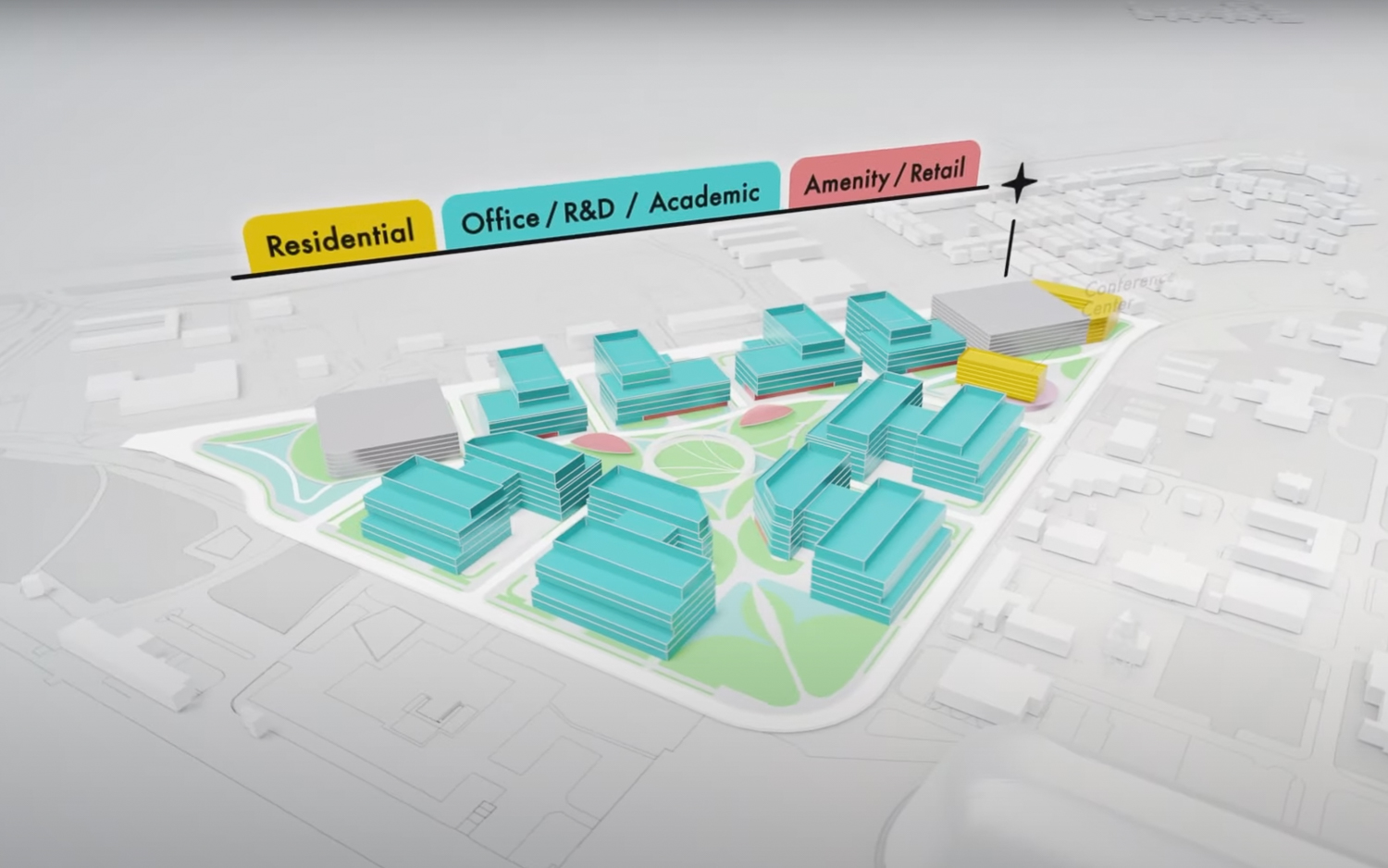
Berkeley Space Center site map, rendering by Field Operations and HOK
Looking forward, UC Berkeley has looked towards technology innovations for drones, artificial intelligence, machine learning, 3D printing on Mars, air mobility, and even laws governing the business of space exploration and resource extraction.
Alexandre Bayen, a UC Berkeley professor of electrical engineering and computer sciences and associate provost for Moffett Field program development, hypothesized that future students could “have a semester rotation program, where UC Berkeley students spend one semester at Berkeley Space Center, take three classes taught there, do their research there, are temporarily housed there for a semester, just like they would do a semester abroad in Paris.”
The school’s press release shared that, “in return for its investment and partnership, UC Berkeley will receive a portion of the revenues that the real estate development is projected to generate. While market-based returns are always subject to change, the joint venture conservatively estimates that the research hub will receive revenues more than sufficient to ensure that Berkeley Space Center is self-sustaining, as well as provide new financial support to the core campus, its departments and colleges, and faculty and students.”
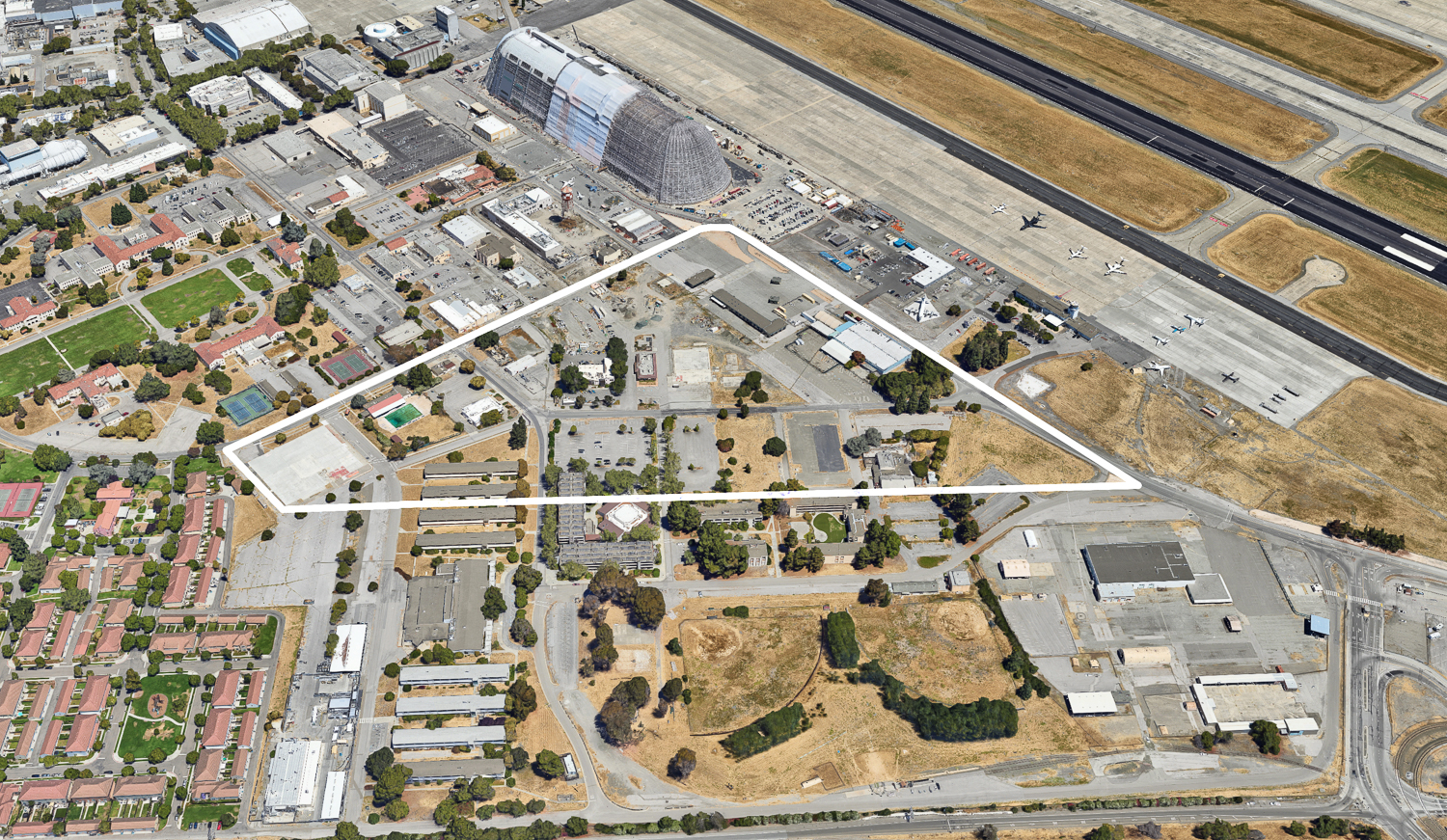
Berkeley Space Center property outlined approximately by YIMBY
Construction is expected to start as early as 2026, with move-ins to the first structure by 2027. The project will be subject to review for CEQA and NEPA.
Subscribe to YIMBY’s daily e-mail
Follow YIMBYgram for real-time photo updates
Like YIMBY on Facebook
Follow YIMBY’s Twitter for the latest in YIMBYnews

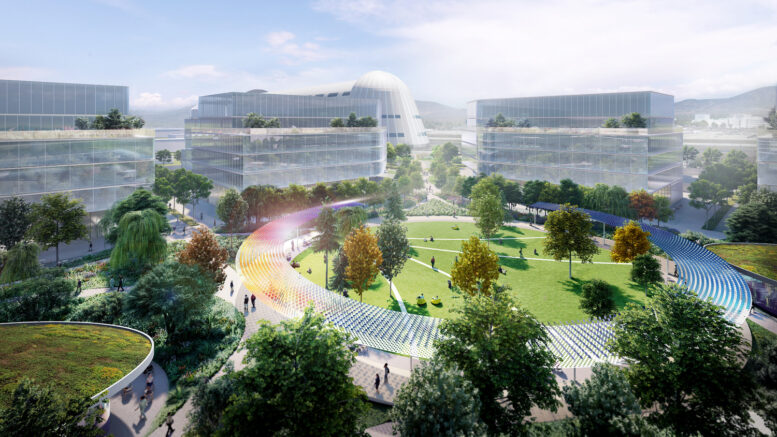
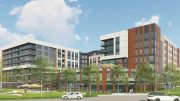
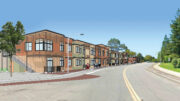
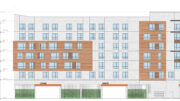
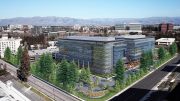
I’m amazed that this does not mention the world-famous 1930s Hangar One, visible in most of the renderings, which housed the dirigible Macon, and other lighter-than-air craft in the golden age of dirigibles—which of course ended abruptly with the crash of the German dirigible Hindenburg. Dirigibles are NOT blimps: they have an internal structure, and the military ones launched biplanes from inside themselves.
We wrote more about it in a previous article after Google started renovations. If you want to read more on that, check out the other article!
I’m curious as to Stanford’s take on this, given it’s in their backyard and it is not a joint venture between the 2 universities.
It is a good 8 miles (and 25-minute drive during business hours) from Stanford. They don’t need to have a ‘take’ on this. It would be far more useful for Stanford to fight against NIMBYs that prevented Univ. Ave. Palo Alto from being built up to 15 storys, or Sand Hill Road not being built up in highrises for the VC offices.
It is high time. This sort of use of that land should have happened 20 years earlier.
But I still say that turning Moffett into a local airport and retiring SJC is better, as the location of Moffett is closer to the frequent flyers, SJC is preventing over 20M sqft of highrise space from being constructed in the vicinity, and the Moffett runways are in fact long enough.